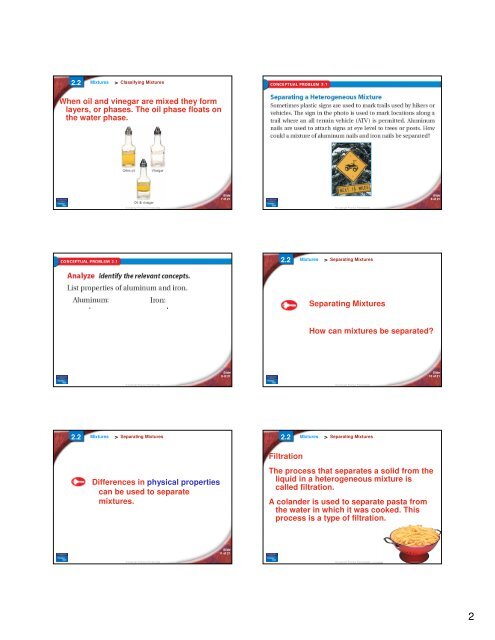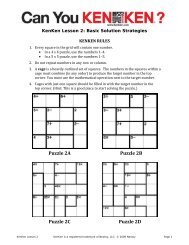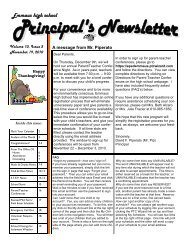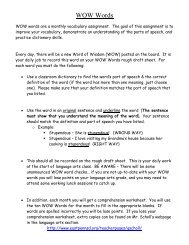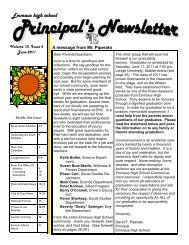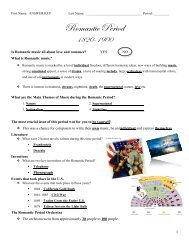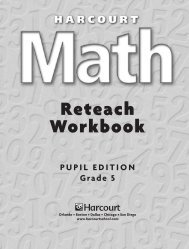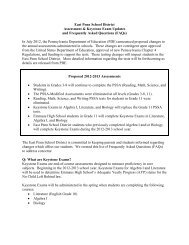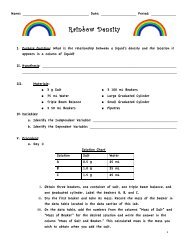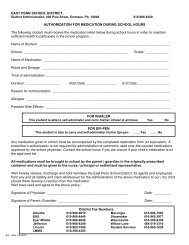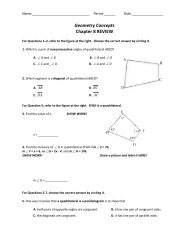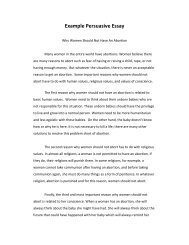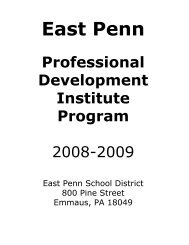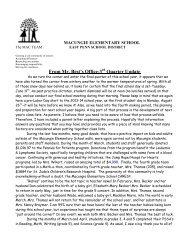ch2-ppt-notes
ch2-ppt-notes
ch2-ppt-notes
You also want an ePaper? Increase the reach of your titles
YUMPU automatically turns print PDFs into web optimized ePapers that Google loves.
2.2 Mixtures > Classifying Mixtures<br />
When oil and vinegar are mixed they form<br />
layers, or phases. The oil phase floats on<br />
the water phase.<br />
Slide<br />
7 of 21<br />
Slide<br />
8 of 21<br />
© Copyright Pearson Prentice Hall<br />
© Copyright Pearson Prentice Hall<br />
2.2 Mixtures > Separating Mixtures<br />
Separating Mixtures<br />
How can mixtures be separated?<br />
Slide<br />
9 of 21<br />
Slide<br />
10 of 21<br />
© Copyright Pearson Prentice Hall<br />
© Copyright Pearson Prentice Hall<br />
2.2<br />
Mixtures<br />
> Separating Mixtures<br />
2.2<br />
Mixtures<br />
> Separating Mixtures<br />
Filtration<br />
Differences in physical properties<br />
can be used to separate<br />
mixtures.<br />
The process that separates a solid from the<br />
liquid in a heterogeneous mixture is<br />
called filtration.<br />
A colander is used to separate pasta from<br />
the water in which it was cooked. This<br />
process is a type of filtration.<br />
Slide<br />
11 of 21<br />
Slide<br />
12 of 21<br />
© Copyright Pearson Prentice Hall<br />
© Copyright Pearson Prentice Hall<br />
2


